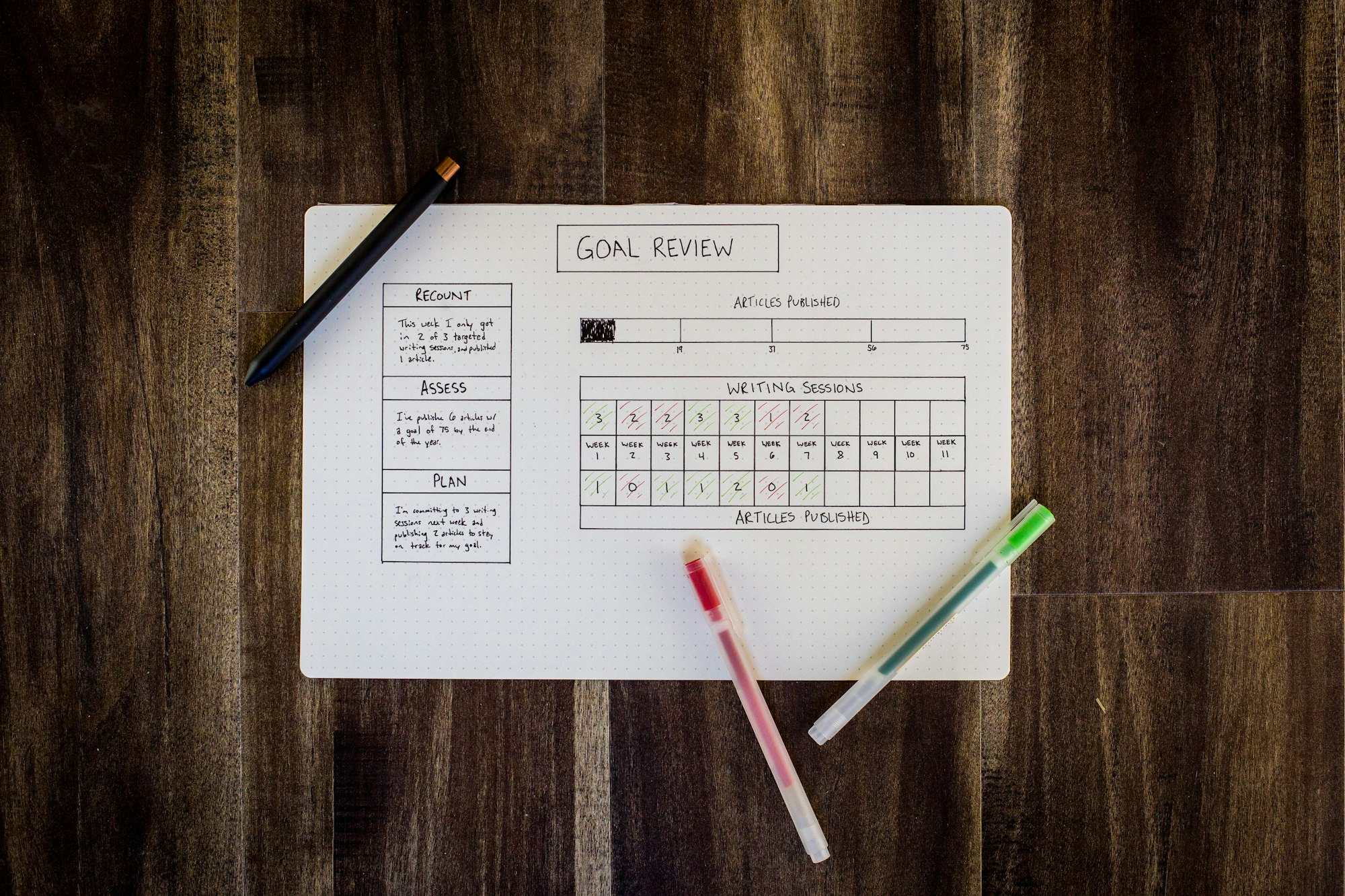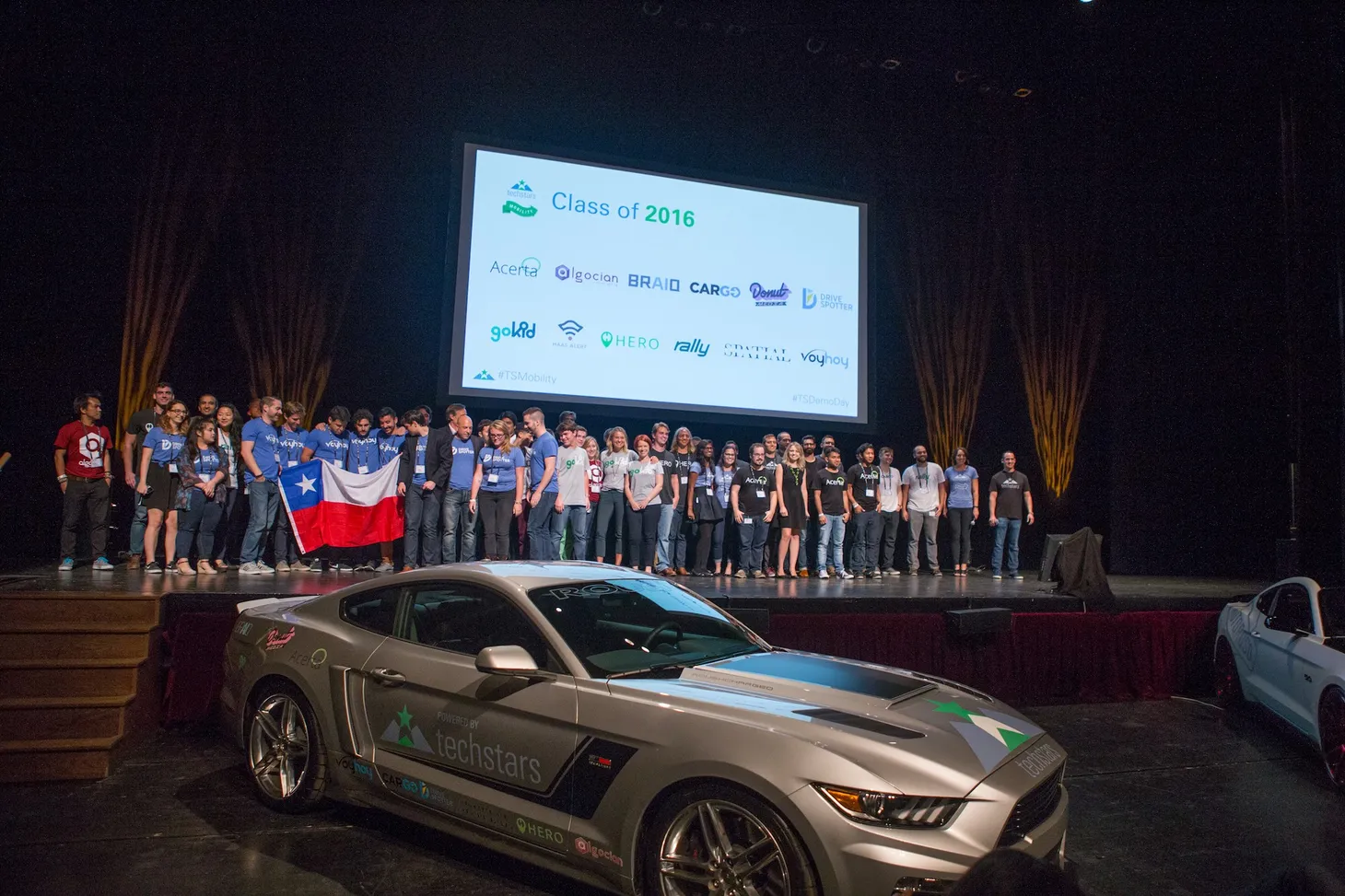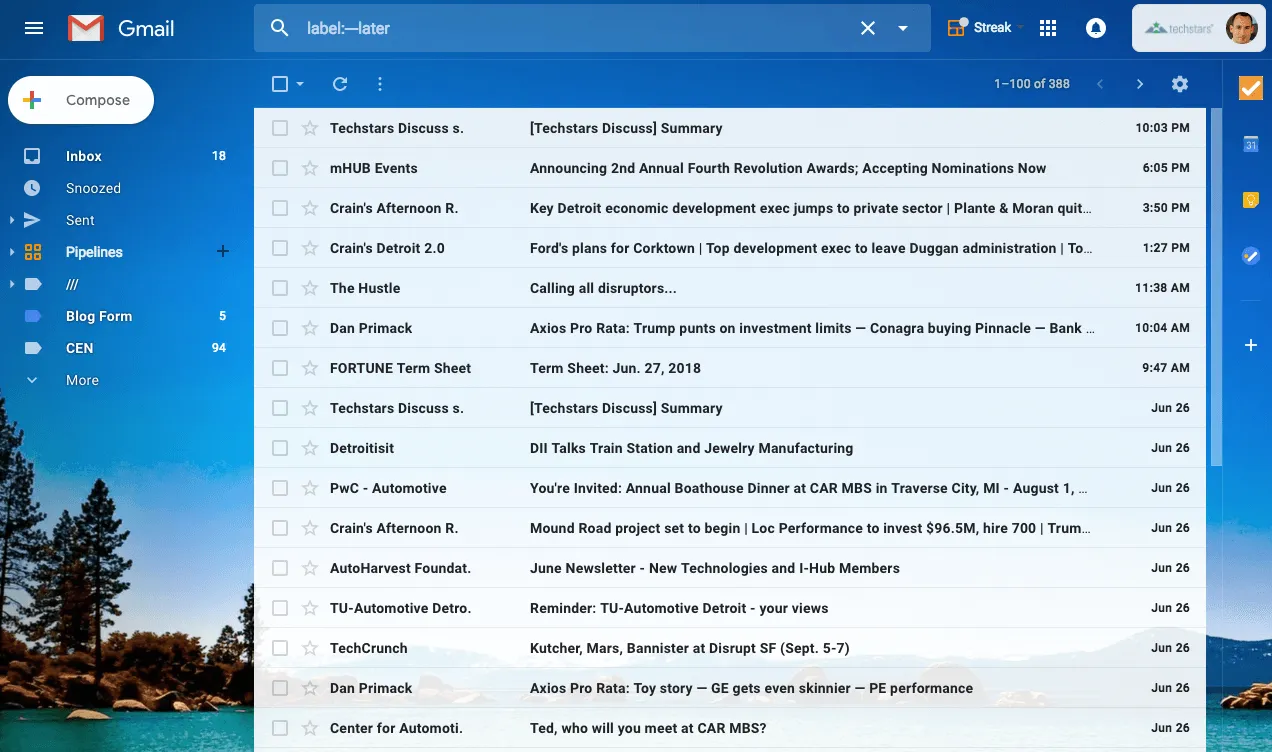3 Rules I use to Stay Productive and Not Overwhelmed

Each week, I receive 1,000 emails, take 15-30 meetings, and I manage a portfolio of 33 startups (soon to be 44). But, I only work 40 hours and make it home for dinner almost every night with my wife and 3 kids. Here's how I do it.
This is an article I originally wrote for Entrepreneur.com.
To say my life is busy is an understatement.
I’m a father of three kids under the age of three. I have a portfolio of 40+ startups I’ve invested in and actively support. Each week, I receive 1,000 emails and take 15-30 meetings.
But also each week, I work 35-40 hours, I go to the gym five times, I clear out my inbox and task list, and each night I sleep 8-9 hours. I’m home for dinner with the family almost every night.
So how do I manage this all and not feel overwhelmed?
I’ve realized the key to managing the overwhelm and finding focus have come down to three essential rules:
- Start with the end in mind
- Find leverage with routines, habits, and technology tools
- Learn to say no
1. Start with the end in mind
“Begin with the end in mind” - Habit 2 from Stephen Covey’s book, The 7 Habits of Highly Effective People
You can’t stay focused if you don’t know what you’re aiming for. Not knowing your priorities is the cause of overwhelm.
How I put this into practice:
I reflect on my eulogy.
Last year I wrote my eulogy. It’s amazing the clarity you get from thinking about your life at the end. Check out Michael Hyatt’s book “Living Forward” for a step-by-step guide to crafting your own.
The result of doing this has been transformational. I feel an inner sense of purpose and a connection to my life’s calling. I’m continually zooming out, so I don’t get lost along the way and drift to a place I don’t want to be. When I have those bad days, I remind myself of those that matter most to me and what they might say at my funeral. This connection immediately tempers any bad days as merely temporary.
I committed to achieving 10 goals each year.
For the past three years, I’ve set aside time in December to reflect on the past year and decide what I want to accomplish in the next year. This reflection helps me keep focused throughout the year.
I started writing 10 goals a year in 2016. For me, I see recurrent themes around family, health, relationships, work, and financial freedom. For 2018, I wrote a financial goal: “Reduce our spending by $500 each month by March 31, 2018.” When I wrote it, I no idea how we’d do that with all of kids activities and our love for dining out. Well, that was December 2017, and this is March 2018, and that goal has been exceeded, closer to $600 a month now.
- I write out my day the night before.
This practice has become one of my favorite habits. Each day, at the end of the workday, I review what I got done that day and plan for the next day. I set 2-3 big things I want to accomplish the next day, clean up my task / project list, and I re-commit to my calendar appointments. When I walk into the office the morning, I’m ready to go, and I know exactly where to start.
2. Find leverage with routines, habits, and technology tools
Simple habits and routines free up willpower for where it is needed most. They minimize decision fatigue so you have a more productive day. The Power of Habit by Charles Duhiggexplains this concept further.
How I put this into practice:
- I write down and review my workday startup and shutdown list of activities.
I was hesitant when I first heard about this concept. How is this going to help me get more done? So one day, I made a list of the things I do each morning to start my work day and things at the end to close up shop. Then something magical happened. I found activities I was overlooking or not doing consistently. I found activities I could optimize. But more importantly, I found a way to delineate the start and end of the workday.
I conduct a personal quarterly review.
Every 90 days, I zoom out of my day-to-day and evaluate it. I look at what I can eliminate, what I can improve, and what I want to change. Two questions I like to ask myself I got from Tim Ferriss: What are 20% of the activities I’m doing that are creating 80% of the results? And what are the 20% of the commitments/people/work that is creating 80% of my stress?
During my 2017 Q4 quarterly review, I realized I was overcommitted. I looked at my commitments and realized there were two boards I could step down from. I served on each for more than four years. I learned a ton but the time had come where it felt more of an obligation and was no longer synergistic with my life goals and work priorities. Stepping down was hard but the effect was amazing: I had a lot more free time in my schedule for new opportunities.
I use email for communication, not task management.
This practice was a very hard bad habit to break. Email is meant for communication. If you treat it as a task list, than anyone, at anytime, can add, anything to your task list. It’s impossible to keep up with. So I started treating email for what it is: communication. And oh, I deleted email from my phone—I don’t always need to be in communication mode.
The result of doing this was a massive reduction in stress and anxiety. Every time I’d open my inbox to complete a task, I’d see more emails. I’d get lost in responses and at the end of the day feeling like I was busy but not productive. Breaking this habit freed me from priorities of others so I could focus on what I needed to do. That little practice has compounded with time to yield tremendous results. How do I get so much done? Avoid email :-)
3. Learn to Say No
No.
So simple to write but yet so hard to put into practice. Greg McKeown’s book Essentialism: The Disciplined Pursuit of Lessis a wonderful deep dive into the art of saying no by pursuing less.
How I put this into practice:
- I review my life priorities and yearly goals each day.
Once you get clear on what you want, it becomes far easier to say no to everything else. The enemy of great is good. - Each time I say yes, I remember I am also saying no to something else.
Consider this, each time you say yes to something, you are inadvertently saying no to something else. That “yes” takes up time in your life and when that next opportunity comes up, you don’t have the time to say yes.
I often respond with “Sorry, I have a prior commitment.”
Who’s that prior commitment? Me. No, I’m not selfish. But if I say yes to everyone else’s requests, how am I going to find time for my work and passion? This goes back to rule #1 — be proactive about what you want versus reactive to what people want.
When I first tried this, I was worried. People are going to get mad. They won’t like me. They will stop asking for me to speak, help, or work with them. It turns out this was a false truth living in my head. People ended up respecting me for being clear about my priorities and boundaries. And the requests, well it seems like I’m getting even more than ever being harder to reach.
For many years, I was a productivity nerd. I’d read books and tried every tool that mentioned “GTD” (from David Allen’s Getting Things Done book). But I continually stumbled, felt overwhelmed, and never felt in control.
In the last year, after some self-reflection, connecting of the dots, and some new resources, I realized I was missing the whole point.
Overwhelm doesn’t need to hinder productivity. The recipe for success is simple: start with the end, establish habits and routines to get there, and don’t be afraid to say no to every request that doesn’t help you accomplish your goals.
Ted Serbinski Newsletter
Join the newsletter to receive the latest updates in your inbox.


